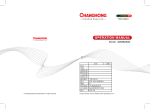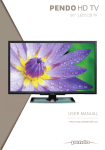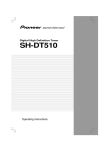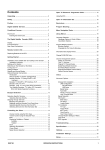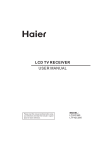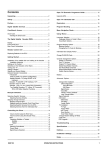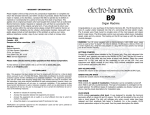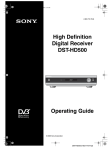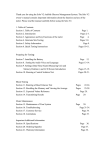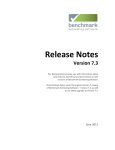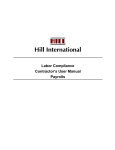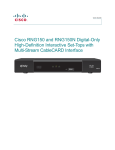Download LED50C2000A
Transcript
LED50C2000A Table of Contents Warning 1 Menu Operation 13 Safety Instructions 3 Configuring the Channel Menu Configuring the Picture Menu Configuring the Sound Menu Configuring the Lock Menu Configuring the Option Menu Configuring the Time Menu 13 13 14 14 15 16 Main Unit Control 5 Front Panel Rear & Sides Panel 5 6 Remote Control 7 Using USB Mode 16 Getting Started 9 Important Unique Buttons 18 Programme Guide Channel List Favorite List 18 18 18 Teletext 19 Using the Teletext Feature 19 Troubleshooting Guide 20 Troubleshooting Maintenance 20 21 Securing the TV to the Wall 22 Using the Remote Control 9 Installing Batteries in the Remote Control 9 Battery Replacement 9 Connection and Setup 10 Connecting the Power Cord 10 Connecting Antenna and Other Devices 10 Basic Operation 11 Installation Guide Turning on and off the TV Programme Selection Volume Adjustment Changing the Input Source How to Navigate Menus 11 11 11 11 12 12 Warning CAUTION RISK OF ELECTRIC SHOCK DO NOT OPEN WARNING: TO REDUCE THE RISK OF ELECTRIC SHOCK DO NOT REMOVE COVER (OR BACK). NO USER SERVICEABLE PARTS INSIDE. REFER TO QUALIFIED SERVICE PERSONNEL. The lightning flash with arrowhead symbol, within an equilateral triangle, is intended to alert the user to the presence of uninsulated "dangerous voltage" within the products enclosure that may be of sufficient magnitude to constitute a risk of electric shock to persons. The exclamation point within an equilateral triangle is intended to alert the user to the presence of important operating and maintenance (servicing) instructions in the literature accompanying the appliance. REGULATORY INFORMATION This equipment generates uses and can radiate radio frequency energy and, if not installed and used in accordance with the instructions, may cause harmful interference to radio communication. However, there is no guarantee that interference will not occur in a particular installation. If this equipment does cause harmful interference to radio or television reception, which can be determined by turning the equipment off and on, the user is encouraged to try to correct the interference by one or more of the following measures: -Relocate the receiving antenna. -Increase the separation between the equipment and receiver. -Connect the equipment into an outlet on a circuit different from that to which the receiver is connected. -Consult the dealer or experienced radio/TV technician for help. Any changes or modifications not expressly approved by the party responsible for compliance could void the user's authority to operate the equipment. CAUTION DO not attempt to modify this product in any way without written authorization from supplier. Unauthorized modification could void the user's authority to operate this product. It is not recommended to keep a certain still image displayed on the screen for a long time as well as displaying extremely bright images on screen. Figures and illustrations in this User Manual are provided for reference only and may differ from actual product appearance. Product design and specifications may be changed without notice. 1 Warning WARNING To Reduce The Risk Of Fire Or Electric Shock, Do Not Expose This Apparatus To Rain Or Moisture. The ventilation should not be impeded by covering the ventilation openings with items, such as newspapers, table-cloths, curtains, etc. The Apparatus shall not be exposed to dripping or splashing and that no objects filled with liquids, such as vases, shall be placed on the apparatus. Attention should be drawn to the environmental aspects of battery disposal. Don’t throw used batteries in dustbin. Please contact your retailer in order to protect the environment. When you install your TV, maintain a distance of at least 4 inches between the TV and other objects (walls, cabinet sides, etc.) to ensure proper ventilation. Failing to maintain proper ventilation may result in a fire or a problem with the product caused by an increase in its internal temperature. No naked flame sources, such as lighted candles, should be placed on the apparatus; To prevent the spread of fire, keep candles or other open flames away from this product at all times. The device may be malfunction when under electrostatic discharge. It can be manually resumed by power off and power on again. To avoid any injury caused by overturn of the product, please always ensure the whole product was placed within the table surface in horizontal. CAUTION connecting the Power Cord Most appliances recommend they be placed upon a dedicated circuit; that is, a single outlet circuit which powers only that appliance and has no additional outlets or branch circuits. Do not overload wall outlets. Overloaded wall outlets, loose or damaged wall outlets, extension cords, frayed power cords, or damaged or cracked wire insulation are dangerous. Any of these conditions could result in electric shock or fire. Periodically examine the cord of your appliance, and its if appearance indicates damage or deterioration, unplug it, discontinue use of the appliance, and have the cord replaced with an exact replacement part by an authorized servicer. Protect the power cord from physical or mechanical abuse, such as being twisted, kinked, pinched, closed in a door, or walked upon. Pay particular attention to plugs, wall outlets, and the point where the cord exits the appliance. The MAINS plug is used as the disconnect device, and the disconnect device shall remain readily operable. Operating Temperature: 0°C to 40°C Operating Humidity: ≤80% Storage Temperature: -20°C to 60°C Storage Humidity: ≤90% This equipment is a Class Ⅱ or double insulated electrical appliance. It has been designed in such a way that it does not require a safety connection to electrical earth. 2 Safety instructions IMPORTANT SAFETY INSTRUCTIONS 1. Read these instructions. 2. Keep these instructions. 3. Heed all warnings. 4. Follow all instructions. 7. Do not block any of the ventilation openings. Install in accordance with the manufacturer's instructions. 5. Do not use this apparatus near water. 8. Do not install near any heat source such as radiators, heat registers, stoves, or other apparatus (including amplifiers) that produce heat. 6. Clean only with a dry cloth. 9. Do not defeat the safety purpose of the polarized or grounding type plug. A polarized plug has two blades with one wider than other. A grounding type plug has two blades and a third grounding prong. The wide blade or the third prong is provided for your safety. When the provided plug does not fit into your outlet, consult an electrician for replacement of the obsolete outlet. 3 Safety instructions 10. Protect the power cord from being walked on or pinched particularly at plugs, convenience receptacles, and the point where they exit from the apparatus. 13. Unplug this apparatus during lightning storms or when unused for long periods of time. 11. Only use the attachments/ accessories specified by the manufacturer. 14. Refer all servicing to qualified service personnel. Servicing is required when the apparatus has been damaged in any way, such as power supply cord or plug is damaged, liquid has been spilled or objects have fallen into the apparatus, the apparatus has been exposed to rain or moisture, does not operate normally, or has been dropped. 12. Use only with a cart, stand, tripod, bracket, or table specified by the manufacturer, or sold with the apparatus. When a cart is used, use caution when moving the cart/ apparatus combination to avoid injury from tip-over. ON DISPOSAL -The fluorescent lamp used in this product contain a small amount of mercury. -Do not dispose of this product with general household waste. -Disposal of this product must be carried out in accordance to the regulations of your local authority. NOTE -If the TV feel cold to the touch, there may be a small "flicker" when it is turned on. This is normal, there is nothing wrong with TV. -Some minute dot defects may be visible on the screen, appearing as tiny red, green, or blue spots. However there have no adverse effect on the monitor's performance. -Avoid touching the screen or holding your finger(s) against it for long periods of time. Doing so may produce some temporary distortion effect on the screen. 4 Main Unit Control Front & Sides Panel 1 2 3 4 5 6 No. Name 1 CH+/CH- 2 VOL+/VOL- 3 MENU Description Changes the channels. Adjusts the volume. Open the menu. To switch the signal source. In the on-screen menu, use this 4 button as you would use the ENTER button on the remote control. 5 6 Turns the unit on and off Power&Sensor Power Indicator and Infrared sensor 5 Main Unit Control Rear Panel 11 12 13 7 No. 7 8 9 10 11 12 13 7 7 8 9 Name HDMI YPbPr PC/DVI AUDIO/ PC ANT DIGITAL AUDIO OUT USB AV 9 Description HDMI input YPbPr input PC input Antenna input SPDIF port USB port AV audio/video signal input. 6 10 Remote Control The buttons of the original remote control are as following: 1 3 4 2 5 6 7 8 9 10 11 14 15 12 13 INDEX 17 16 18 19 21 22 25 26 DVB USB 20 23 24 27 28 1. : Power, switch on or off TV set. 2. : Press to mute or restore sound. 3. STILL: Press to hold the picture. : Hold the teletext page on display, press again to release. : Stop (in USB /PVR mode). 4. : Enter the Teletext, press again for MIX mode, press this button again to exit. : Play / Pause (in USB /PVR mode). 5. RADIO: Press to interchange Radio and DTV programs when there is Radio program (In DTV mode). 6. : Press to select different images sizes. : Change size of teletext screen in display mode. 7. COLOR BUTTONS: Red/ green/ yellow/ blue key navigation link. : Fast reverse (in USB mode). : Fast forward (in USB mode). : Previous (in USB mode). : Next (in USB mode). 8. SOURCE: Press to select signal source. ? : Reveal the hidden information of some teletext pages. 9. MENU: Press to enter the menu screen for various optional adjustable settings. 10. ENTER: Press to execute the selected item in the menu screen. 11. ▲/▼/◄/►: To select the direction. 12. INFO: Press to display the current program information on the screen. i : Go to the index page. 13. INDEX: Press to enter the Recorded list. (In DTV mode) Sort programmes in PROGRAMME GUIDE or Recorded List. 14. EXIT: Exit OSD Menu. 15. LIST: Press to call up the channel list. Press again to exit it. 7 Remote Control 1 3 4 2 5 6 8 9 10 7 11 14 15 12 13 INDEX 17 16 18 19 21 22 25 26 DVB USB 20 23 24 27 28 16. VOL+/VOL-: Press to adjust the volume level up or down. 17. CH+/CH-: Press to select channels in ascending or descending order. 18. NUMBER BUTTONS: Choose channels or password importation. 19. AUDIO (∞I/II): Select sound mode in ATV mode and switch audio language in DTV mode. 20. DVB: Selects the DTV mode directly. 21. SLEEP: Press to set the sleep timer. When the preset length of time has passed, the TV set enters standby mode. 22. : Switch on/off the favorite programs list. 23. EPG: Electronic Program Guide, use in the DTV mode. 24. : Return to last viewed program. : Cancel the teletext but not to exit 25. teletext, press again to exit. 26. : Enter subtitle mode or subpage. button to start recording. (In 27. : Press DTV mode). 28. USB: Press to switch to the USB source. NOTE: All pictures in this manual are examples, only for reference, actual product may differ from the pictures. The buttons not mentioned here are not used. 8 Getting Started Using the Remote Control When using the remote control, aim it at remote sensor on the television. If there is an object between the remote control and the remote sensor on the unit, the unit may not operate. • Point the remote control at the REMOTE SENSOR located on the television. • When using this television in a very brightly lit area, the infrared REMOTE CONTROL SENSOR may not work properly. • The recommended effective distance for using the remote control is about 7 metres. REMOTE SENSOR Installing Batteries in the Remote Control 1. Open the cover at the back of the remote control. 2. Install two AAA size batteries. Make sure to match the “+” and “-” ends of the batteries with the diagram inside the compartment. 3. Replace the cover. Battery Replacement You will need to install the batteries into the remote control to make it operate following the instruction below. When the batteries become weak, the operating distance of the remote control will be greatly reduced and you will need to replace the batteries. Notes on Using Batteries: The use of the wrong type of batteries may cause chemical leakage and/or explosion. Please note the following: • Always ensure that the batteries are inserted with the + and - terminals in the correct direction as shown in the battery compartment. • Different types of batteries have different characteristics. Do not mix different types. • Do not mix old and new batteries. Mixing old and new batteries will shorten battery life and/or cause chemical leakage. • Replace batteries as soon as they do not work. • Chemicals which leak from batteries may cause skin irritation. If any chemical matter seeps out of the batteries, wipe it up immediately with a dry cloth. • The batteries may have a shorter life expectancy due to storage conditions. Remove the batteries whenever you anticipate that the remote control will not be used for an extended period. • The batteries (battery pack or batteries installed) shall not be exposed to excessive heat such as sunshine, fire or the like. CAUTION: • It may result in an explosion if batteries are replaced incorrectly. • Only replace batteries with the same or equivalent type. 9 Connection and Setup Connecting the Power Cord 1.Connect the power cord with 240V power supply. 2.Turn on the power switch of the TV. NOTE: • The power input for the TV is 240V~ 50/60Hz. • Be sure the power cord is disconnected and the TV is switched on before making connections. • To be completely disconnected from the supply mains, the mains plug of the television should be disconnected from the mains socket outlet completely. Connecting Antenna and Other Devices SPDIF USB Drive The equipment with HDMI output function The equipment with HDMI output function The equipment with Component output function Audio R Audio R Video Audio L Pr/Cr Y Pb/Cb Audio L The equipment with AV output function (such as VCR, DVD, set-top boxes, etc.). Computer RF Coaxial Wire(75 ohm) The equipment with HDMI output function • When using digital audio optical output socket, please note the plug direction which should be in accordance with the socket. Otherwise the socket would be easily damaged for the improper operation. • Make sure that all the components are connected correctly. • For receiving free to air TV broadcasts, we recommend that you use an external fixed antenna. Should you require the use of a temporary antenna, please ensure that you purchase an antenna with sufficient ability to receive in weak signal areas. Only when you are in close proximity to a transmitter will a temporary antenna reproduce a signal as strongly as a fixed antenna. A digital antenna on the roof is recommended. • Component and AV can not be used at same time for they share of one audio channel. 10 Basic Operation Installation Guide When the TV is initially powered on, a sequence of on-screen prompts will assist in configuring basic settings. 1. Selecting a language Select the desired OSD language, then press the ► button to go to the next page. 2. Selecting a picture mode Select the desired picture mode, then press the ► button to go to the next page. 3. Selecting a country Select the appropriate country, then press the ► button to start auto tuning. 4. Auto Tuning Scans for channels automatically and stores them in the TV’s memory. Turning on and off the TV ■ Turn on the TV Connect the power cable, and press the button to turn on the TV. ■ Turn off the TV Press the button on the remote control to enter standby mode. Do not leave your set in standby mode for long periods of time. It is best to unplug the set from the mains and aerial. When there is an accident power off, it is recommended to unplug the power cable from the power socket. ■ No signal There is No Signal menu on screen when there is no input signal. In TV mode, if there is no signal in 5 minutes, the TV will turn off automatically. In PC-RGB mode, the TV set will automatically turn off in 1 minute if no input signal. When VGA cable is connected, the TV turns on automatically. Programme Selection ■ Using the CH+/CH- on the panel of TV or on the remote control. Press CH+ to increase channel number. Press CH - to decrease channel number. ■ Using 0- 9 digital buttons. You can select the channel number by pressing 0 to 9. (In ATV, DTV mode) ■ Example To select - channel (e.g. Channel 5): Press 5. To select -- channel (e.g. Channel 20): Press 2 and 0 in a short time. Volume Adjustment ■ Press the VOL+/- button to adjust the volume. ■ If you want to switch the sound OFF, press the . ■ You can release mute by pressing the or increase the volume. 11 Basic Operation Changing the Input Source 1. You can select the input source by pressing the SOURCE button on the remote control. 2. Press the▲/▼button to cycle through the input source, and press the ENTER button to confirm your choice. How to Navigate Menus Before using the TV follow the steps below to learn how to navigate the menu in order to select and adjust different functions. The access step may differ depending on the selected menu. 1. Press the MENU button to display the main menu. 2. Press the◄/►button to cycle through the main menu. Press the ENTER button to access the submenu. 3. Press the▲/▼button to select the desired sub item, then press the ENTER button. 4. Press the ▲/▼/◄/► button to select the desired value. The adjustment in the OSD may differ depending on the selected menu. 5. Press the MENU button to return to the previous menu. 6. Press the EXIT button exit from the menu. When an item in MENU is displayed gray, it means that the item is not available or cannot be adjusted. Buttons on the TV have the same function as corresponding buttons on the remote control. If your remote control is lost or couldn’t work, you may use the buttons on the TV to select menus. This manual focuses on operation of the remote control. 12 Menu Operation Configuring the Channel Menu ■ Auto Tuning: Press the ENTER button to start Auto Tuning. 1. Select the country and tune type for channels. 2. The TV will begin memorizing all of the available channels. ■ DTV Manual Tuning: Manual store for digital channels. Press the ◄/► button to select channel. Press the ENTER button to search. ■ ATV Manual Tuning: Manual store for ATV channels. Press the ▲/▼ button to select items. Press the ◄/► button to adjust it. Press the red button to save it. Press the EXIT to exit. ■ Programme Edit: Press the ▲/▼ button to select a channel. Press the red button to delete the channel. Press the green button to rename the channel. (In ATV mode) Press the yellow button to move the channel. Press the blue button to skip the channel. button to set the favorite channel. Press the ■ Signal Information (In DTV mode): Display the current Signal Information. Configuring the Picture Menu ■ Picture Mode: You can select the type of picture which best corresponds to your viewing requirements. Contrast, Brightness, Color, Sharpness and Tint (NTSC) can be adjusted when the picture mode is set to User. ■ Color Temp: Select the color temperature of the picture. ■ Aspect Ratio: You can select the picture size which best corresponds to your viewing requirements. ■ DNR: Reduces screen noise without compromising video quality. ■ Screen (In PC-RGB mode) Auto Adjust: Adjust the image automatically. Horizontal Pos.: Centre the image by moving it left or right. Vertical Pos.: Centre the image by moving it up or down. Size: Adjust the screen size. Phase: Adjust when characters have low contrast or when the image flickers. 13 Menu Operation Configuring the Sound Menu ■ Sound Mode: You can select a sound mode to suit your personal preferences. Items can be adjusted when the sound mode is set to User. ■ Balance: You can adjust the sound balance of the speakers to preferred levels. ■ Auto Volume: Auto Volume automatically remains on the same level of volume if you change programmes. Because each broadcasting station has its own signal conditions, volume adjustment may be needed every time when the channel is changed. This feature allows users to enjoy stable volume levels by making automatic adjustments for each program. ■ SPDIF Mode: You can select a desired SPDIF mode. Configuring the Lock Menu Press your password (it is 0 0 0 0 at first), Then you will go the sub-menu as following. If you forget, the super password of 1225 still valid. ■ Lock System: Set the system lock On or Off. ■ Set Password: You can set your private password. Press the number buttons on the remote control to set the new password. When the new password has been input twice, the setting is finished successfully. ■ Block Program (In ATV/DTV mode): Press the green button to lock the available program you want. Press the green button again to unlock it. ■ Parental Guidance (In DTV mode): This feature can prevent children watching adult’s TV programmes, according to the rating limit set. This function appearance according the information from broadcasting station. Therefore if the signal has incorrect information, this function does not operate. 14 Menu Operation Configuring the Option Menu ■ OSD Language: Select your preferred On Screen Display language. ■ Audio Language: Select your preferred audio language. (Available for digital channels if multiple audio languages are broadcasted.) ■ Subtitle Languages: Select your preferred subtitle language or turn off subtitle. (Available for digital channels if multiple subtitle languages are broadcasted.) ■ Hearing Impaired (In DTV mode): When hearing Impaired is On, the TV screen will give some information to the people whose hearing are impaired when Hearing Impaired is Off, the information will be hidden. ■ Transparency: Menu transparency selection, you can select menu transparency according to the different background picture. ■ E-POP: Switch the E-POP on or off. E-POP mode is the optimal setting for store environments. ■ PVR File System (In DTV mode) Select Disk: Select the disk used for PVR. Check PVR File System: Check the disk and test the speed of the system. USB Disk: USB activated or not. Format: Format USB disk. Time Shift Size: Select the time to do Time Shift. Speed: Display speed of the storage device. Free Record Limit: Select the recording duration. Digital program recording Insert an U disk, the system will automatically create a folder (_MSTPVR) to store the files has been recorded. Carve-recording begins when button pressed, and it records all the time until button pressed or the memory is full. During the recording, press button to hide/display the record menu. Time shift function button to activate Time Shift while recording. Press the Press button to hide/display the Time shift menu. You can operate refer to the time shift menu. 15 Menu Operation Recorded List Press the INDEX button to display the Recorded List. Press the ▲/▼ button to select items, then press ENTER button to play. Press the red button to delete the programme. Press the green button to display the programme information. Press the INDEX button to sort programmes. Press EXIT button to exit. USB disk at least the capacity with 512MB. Please format the inserted USB disk when it could not be recorded to. During the Device formatting, do not disconnect the device while formatting is in progress. If you format the device, all files will be deleted. Before formatting your device to the TV, please back up your files to prevent them from damage or loss of data. If USB disk in some virus meeting formats turn failure. When an USB device has several partitions,the PVR system can help to choose anyone of that to perform recording. If PVR recording system is used all the time, it will exit PVR system automatically. USB memory must support USB2.0 high-speed specification. Some of nonstandard USB device may not be supported. ■ Reset: Restore the system settings to the factory default. Configuring the Time Menu ■ Clock: Display the DTV Signal Stream Time or set the System Time manually. ■ Sleep Timer: Select the time to turn the TV to standby mode automatically. ■ Auto Sleep: Select the Auto Sleep time you want. The TV will enter into standby mode automatically when there is no operation in set time. ■ Time Zone: Select your time zone. Using USB mode ■ To Access/Quit USB mode Connect an USB device. Press SOURCE button to display the main menu. Use the ▲/▼ to highlight USB, and the ENTER button to access the USB mode. You may 16 Menu Operation also use the signal source selection menu to exit from the USB mode. Special USB device may be not or well supported. USB max. Load: DC5V 500mA. In terms of loading capacity, it can not support all models of mobile hard disk. It is recommended to use low-power mobile hard disk of no more than 500mA current. ■ The formats supported Photo Format Support: .jpg/.jpeg/.bmp/.png Music Format Support:.mp3/ .m4a/ .aac Movie Format Support: .mpg/ .ts/ .mkv/ .dat/ .mp4/ .vob Text Format Support: .txt Special algorithm documents may not be or well be supported by the USB. The USB supports the format mentioned above, if the file format is not supported, change it to the given format. ■ Main Operating Interface PHOTO/ MUSIC/ MOVIE/ TEXT 1. Use the ◄/► button to select PHOTO, MUSIC, MOVIE or TEXT. Press ENTER button enter into sub-menu. 2. Use the arrow buttons and ENTER button to enter the desired disk. Press the arrow buttons and ENTER button to open the folder. 3. Use the arrow buttons to highlight the file. • Use the ENTER button to mark or unmark a file. Press button to play the selected files. If no file is marked, all the files in the folder will be played in sequence after you press button. • Press the red button to access to the submenu, then you can delete the seleted file. 4. Press the INFO button to display the menu screen in playing. 5. Press the to stop the playing files. 6. Use the arrow buttons to highlight the Up Folder icon, press the ENTER button to return to the previous menu screen. 7. Press the EXIT button to exit. 17 Important Unique Buttons Programme Guide (In DTV mode) Press EPG button to display the Programme Guide menu. This function let you know the detailed information of the channel, indicating the time of the program playing. Press EXIT button to exit. Record: Press the red button to set the parameters for recording. The unit is able to do schedule recording when TV is turning on or in standby mode. You can set up several schedule recording. Different schedules should not overlap. When recording starts in standby mode, the front indicators will change color and there will be no picture or sound from the unit. You can press button to light up the screen. INFO: Press the green button to see the detailed information of the current channel. Schedule: Press the yellow button to display the schedule list. Remind: If you find the desired program which will be shown in the future. Press the blue button to book program. Press the CH+/CH- button to select the preceding or following page. ENTER: Press to change channel. Channel List Press LIST button to display the Channel List. Press ▲/▼ to select the items. Press ENTER button to enter the channel. Press CH+/CH- button to page down or up the Channel list. Press LIST button to exit. Favorite List button to display the favorite list. Press Press ▲/▼ to select the items. Press ENTER button to enter the channel. Press CH+/CH- button to page down or up the Favorite list. button to exit. Press 18 Teletext Using the teletext feature ■ Display teletext 1. Select a TV station with a teletext signal. button to enter teletext mode. 2. Press the 3. Press the button 2nd to enter Mix mode, this function enables you to superimpose the teletext page over the TV program. 4. Press the button 3rd return or exit to the normal TV mode. ■ Page selection 1. Enter the page number (three digits) using the number buttons. If you press a wrong number during input, you must complete the three digit number and then reenter the correct page number. 2. The ▲/▼ button can be used to select the preceding or following page. ■ Hold You can press the ■ Index Press the i button to hold a page, and press it again to release the page. button to enter the main index page directly. ■ Enlarging Text When a page is displayed, you can double the size of the text to make it easier to read. button to enlarge the top half of the page. 1. Press the 2. Press the button again to enlarge the bottom half of the page. 3. Press the button once more to return to the normal display. ■ Reveal mode You can display concealed teletext information (e.g. Answer to puzzles or riddles etc.) by pressing ? button. Press ? button again to remove the information from the display. ■ Subpage Some teletext may contain several sub-pages which are automatically paged in a certain cycle by the TV station. button directly and 1. Yon can enter into a certain sub page by pressing the select the page number with number buttons. Enter the sub page number (e.g. 0003) for the third sub page. 2. Press the button again to exit the sub page mode. ■ Color buttons (Red, Green, Yellow and blue) Press these buttons to access directly to the corresponding color pages displayed at the lower part of the teletext screen. 19 Troubleshooting Guide Troubleshooting Before contact the service technician, perform the following simple checks. If any program still persists, unplug the TV and calling for serving. PROBLEM POSSIBLE SOLUTION - Check whether the main plug has been connected to a wall let. No sound and picture - Check whether you have pressed the POWER button on the front of TV set. - Check the picture contrast and brightness settings. - Check the volume. - Sound muted? Press the MUTE button. Normal picture but no - Try another channel, the problem may be with the sound broadcast. - Are the audio cables installed properly? - Check to see if there any object between the product and remote control Causing obstruction. The remote control does - Are batteries installed with correct polarity (+ to +, not work to -)? - Correct remote operating mode set: TV, VCR etc.? - Install new batteries - Is the sleep timer set? Power is suddenly turned - Check the power control settings. Power interrupted. off - No broadcast on station tuned with auto activated. - This is normal, the image is muted during the product Picture appears slowly startup process. Please contact your service center, if after switching on the picture has not appeared after five minutes. - Adjust the color in menu option. - Keep a sufficient distance between the product and the VCR. - Try another channel, the problem may be with the No or poor color or poor picture broadcast. - Are the VIDEO cables installed properly? - Activate the any function to restore the brightness of the picture. Horizontal/vertical bars or - Check for local interference such as an electrical picture shaking appliance or power tool. - Station or cable product experiencing problems. Tune to another station. Poor reception on some - Station signal is weak, reorient antenna to receive channels weaker station. - Check for sources of possible interference. - Check the antenna (Change the direction of the Lines or streaks in pictures antenna). No output from one of the - Adjust balance in menu option. speakers 20 Troubleshooting Guide NOTE: There is a problem in VGA mode (Only VGA mode applied). PROBLEM The signal is out of range. Vertical bar or stripe on back ground & Horizontal Noise & Incorrect position. Screen color is unstable or single color. POSSIBLE SOLUTION - Adjust resolution, horizontal frequency, or vertical frequency. - Check it whether the signal cable is connected or loose. - Check the input source. - Work the auto configure or adjust clock, phase, or H/V position. - Check the signal cable. - Reinstall the PC video card. Maintenance Early malfunctions can be prevented. Careful and regular cleaning can extend the life of your new TV. Be sure to turn the power off and unplug the power cord before you begin any cleaning. Cleaning the screen 1. Here’s a great way to keep the dust off your screen for a while. Wet a soft cloth in a mixture of lukewarm water and a little fabric softener or dish washing detergent. Wring the cloth until it’s almost dry, and then used it to wipe the screen. 2. Make sure the excess water is off the screen, and then let it air-dry before you turn on your TV. Cleaning the cabinet To remove dirt or dust, wipe the cabinet with a soft, dry, lint-free cloth. Please be sure not to use a wet cloth. Extended Absence If you expect to leave your TV dormant for a long time (such as a vacation), it’s a good idea to unplug the power cord to protect against possible damage from lightning or power surges. Disposal of old electrical appliances The European directive 2012/19/EU on Waste Electrical and Electronic Equipment (WEEE), requires that old household electrical appliances must not be disposed of in the normal unsorted municipal waste stream. Old appliances must be collected separately in order to optimize the recovery and recycling of the materials they contain, and reduce the impact on human health and the environment. The crossed out “wheeled bin” symbol on the product reminds you of your obligation, that when you dispose of the appliance, it must be separately collected. Consumers should contact their local authority or retailer for information concerning the correct disposal of their old appliance. 21 Securing the TV to the Wall Caution : Pulling, pushing, or climbing on the TV may cause the TV to fall. In particular, ensure your children do not hang over or destabilize the TV; doing so may cause the TV to tip over, causing serious injuries or death. Follow all safety precautions provided on the included Safety Flyer. For added stability, install the anti-fall device for safety purposes, as follows. To secure the TV : 1. Put the screws into the clamps and firmly fasten them onto the wall. Confirm that the screws have been firmly installed onto the wall. ★ You may need additional material such as an anchor depending on the type of wall . ★ Since the necessary clamps , screws , and string are not supplied , please purchase them separately. NOTE: DO not use elastic string. 2. Remove the screws from the centre back of the TV , put the screws into the clamps , and then fasten the screws onto the TV again . ★ Since the necessary screws are not supplied. In this case, please purchase the screws of the following specifications. ★ Screw Specifications : For a 32 ~ 55 Inch TV : (M4~M8)(according to the measurement of screw hole) X L10. 3. Connect the clamps fixed onto the TV and the clamps fixed onto the wall with a strong cable . ★ Install the TV near to the wall so that it does not fall backwards . ★ It is safe to connect the string so that the clamps fixed on the wall are equal to or lower than the clamps fixed on the TV. ★ Remove the cable before moving the TV. Wall Wall 4. Verify all connections are properly secured . Periodically check connections for any sign of fatigue for failure . If you have any doubt about the security of your connections contact a professional installer . Note: All pictures in this manual are examples, onl y for reference, actual product may differ from the pictures. To prevent injury, this apparatus must be securely attached to the floor/wall in accordance with the installation instructions. 22 Australian DTV Channel Table City Station Channel Number Middle Frequency(MHz) Transmitter Location Adelaide Digital 7 VHF 6 177.5 Mt Lofty Digital 9 Brisbane Hobart Launceston Meibourne Perth Sydney Gold Coast Canberra Darwin Newcastle Wollongong 191.625 Mt Lofty VHF 11 219.5 Mt Lofty VHF 12 226.5 Mt Lofty Digital SBS UHF 33 564.5 Mt Lofty Digital 7 VHF 6 177.5 Mt Coot-tha Digital 9 VHF 8 191.625 Mt Coot-tha Digital 10 VHF 11 219.5 Mt Coot-tha Digital ABC VHF 12 226.5 Mt Coot-tha Digital SBS UHF 36 585.5 Mt Coot-tha Southern Cross VHF 10 212.5 Mt Wellington WIN VHF 7 184.5 Mt Wellington ABC VHF 8 191.625 Mt Wellington SBS VHF 9A 205.5 Mt Wellington TEN VHF 11 219.5 Mt Wellington Southern Cross UHF 60 753.5 Juliana St WIN UHF 63 774.5 Juliana St ABC UHF 65 788.5 Juliana St SBS UHF 64 781.5 Juliana St TEN UHF 66 795.5 Juliana St Digital 7 VHF 6 177.5 Mt Dandenong Digital 9 VHF 8 191.625 Mt Dandenong Digital 10 VHF 11 219.5 Mt Dandenong Digital ABC VHF 12 226.5 Mt Dandenong Digital SBS UHF 29 536.5 Mt Dandenong Digital 7 VHF 6 177.5 Carmel Digital 9 VHF 8 191.625 Carmel Digital 10 VHF 11 219.5 Carmel Digital ABC VHF 12 226.5 Carmel Digital SBS UHF 29 536.5 Carmel Digital 7 VHF 6 177.5 Artarmon Digital 9 VHF 8 191.625 Artarmon Digital 10 VHF 11 219.5 Artarmon Digital ABC VHF 12 226.5 Artarmon Digital SBS UHF 34 571.5 Gore Hill Digital 7 UHF 53 704.5 Mt Tamborine Digital 9 UHF 59 746.5 Mt Tamborine Southern Cross 10 UHF 43 634.5 Mt Tamborine Digital 10 UHF 56 725.5 Mt Tamborine Digital SBS Batchelor VHF 8 Digital 10 Digital ABC UHF 36 585.5 Mt Tamborine Digital ABC UHF 62 767.5 Mt Tamborine Digital NBN UHF 68 809.5 Mt Tamborine Digital Prime UHF 65 788.5 Mt Tamborine QQQ UHF 50 683.5 Digital SBS UHF 53 704.5 Mardango Cres Digital ABC UHF 56 725.5 Mardango Cres Digital 9 UHF 59 746.5 Mardango Cres Mardango Cres Digital 7 UHF 62 767.5 Digital IMPARJA UHF 65 788.5 Digital 10 VHF 6 177.5 Black Mountain Digital ABC VHF 9A 205.5 Black Mountain Digital WIN VHF 11 219.5 Black Mountain Digital PRIME VHF 12 226.5 Black Mountain Digital SBS UHF 30 543.5 Black Mountain Digital SBS UHF 29 536.5 Deloraine Rd Digital ABC UHF 30 543.5 Deloraine Rd Digital 9 UHF 31 550.5 Deloraine Rd Digital 7 UHF 32 557.5 Deloraine Rd Digital NBN UHF 36 585.5 Mt Sugarloaf Digital PRIME UHF 53 704.5 Digital 10 UHF 51 690.5 Mt Sugarloaf Digital ABC UHF 37 592.5 Mt Sugarloaf Mt Sugarloaf Digital SBS UHF 38 599.5 Mt Sugarloaf Digital WIN UHF 36 585.5 Knigths Hill Digital 10 UHF 37 592.5 Knigths Hill Digital PRIME UHF 38 599.5 Knigths Hill Digital ABC UHF 51 690.5 Knigths Hill Digital SBS UHF 54 711.625 Knigths Hill




























